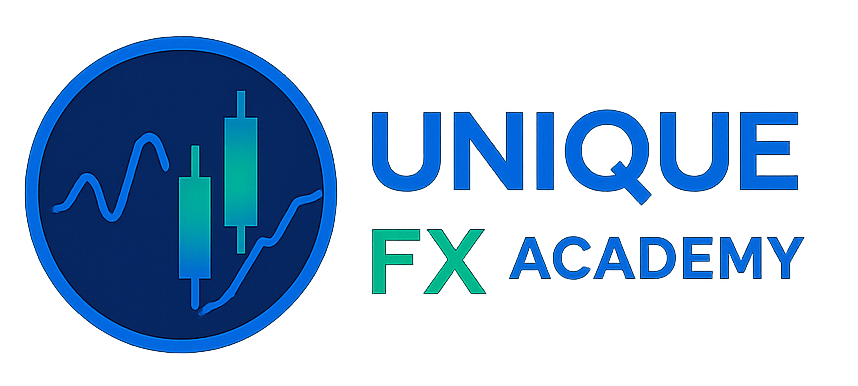Finding the best Forex Trading strategies can be overwhelming for newbies. However, it is undoubtedly one of the most challenging approaches to master in the Forex industry. The idea behind forex trading is to buy low and sell high. You need to know what your competitors are doing and act accordingly.
Increasing your profits is not difficult to find; you only need to know where on the market you can make the most money and what method(s) of trading will work for you. This article will give you some ideas on how to get started with this important endeavor.

Table of Contents
What is a forex trading strategy?
A forex trading strategy is a strategy that a forex trader employs to determine whether to buy or sell a currency pair at any particular time. Forex trading strategies can use technical analysis or news-based events.
Why do people adopt Forex trading strategies?
Since currency markets differ from stock markets, you’ll need to experiment with several Forex trading strategies before settling on a winning formula.
Whether you want to take a fundamental or technical approach to Forex is up to you. Together, they form a considerably more powerful trading method, even though each technique stands on its own as effective.
Taking up a Forex trading method may be done with the help of many different analytical tools. And as you gain experience, you’ll learn how to make the most of each instrument and maximize its potential. The more regularly you practice this, the more quickly you become an expert Forex trader.
The Best Tools For Analyzing Forex Trading Strategies
Traders can use analytical tools to find buy and sell signals, recognize market patterns, and decide where to place bids.
However, to develop a reliable and successful forex strategy, you must comprehend how your selected indicators might function as safeguards in a larger trading plan.
The best traders have a wide variety of resources, allowing them to weigh the potential benefits and drawbacks of specific trades and make more informed judgments.
Below, we’ve detailed three tools we’ve used and what you should know about them.
Trend-Following Tools
In reality, trading with the current trend is more rewarding and less risky, especially in Forex. Wall Street movies frequently glorify people who attempt to foretell the future. Forex trading strategies does not necessitate a crystal ball or Michael Burry-level data. A winning trading strategy is built on identifying a trending market and assessing its direction and strength.
Lagging indicators and trend-following tools track price behavior. Moving averages relate current price movement to the average closing price over a specific period. A moving-average trendline’s length and direction might indicate whether a market is in an uptrend or a decline.
A trend-following instrument, such as a simple moving average, provides more market context than a single price action frame.
Trend-Confirming Tools
After determining how the market behaves, apply another indicator to validate trend strength, direction, and momentum. This reduces false signals and informs entry and exit points. MACD is a common technique for confirming forex trends. It displays an exponential (weighted) and simple moving average alongside price movement. Two lines interact to establish the strength and momentum of the trend. Any variations in price momentum are interpreted as early warning signs of a possible trend change. Confirming trend momentum, direction, and strength assists you in estimating the risks and rewards of entering a position at various times. When trend strength and speed are strong, entering a trend-following part is less risky. When the strength and momentum of a trend shift, traders look for exit and entry points with the highest profit potential and the lowest risk.
Profit-Taking Tools
Profit-taking tools identify departure points that strike a balance between risk and profit. It would help to predict when the trend would reverse or stagnate to benefit from your position. The idea is to have a separate tool for each function to avoid depending too heavily on the recommendations of a single signal.
Bollinger Bands are another tool for profit-taking. Unlike RSI and Stochastic, Bollinger Bands are three lines plotted on your price action graph. A simple moving average (SMA) is used as a centreline to account for closing price variance. A standard deviation is calculated above and below it. The upper Bollinger Band indicates overbought conditions, whereas the lower band suggests oversold conditions. These overbought and oversold readings are computed using a standard deviation, making them more precise than an average. They help verify other indicators’ signals in volatile markets and identify profit-taking opportunities.
What are the top 4 Forex trading strategies?
1. Position Trading
Position trading involves holding trades for weeks or months. You’ll trade on a daily or weekly basis. Fundamental analysis is crucial for position traders (such as NFP, GDP, and retail sales). Technical analysis helps with entrance timing.
Assume:
You conclude that EUR/USD fundamentals are optimistic. You don’t want to go too far at any cost. You’re waiting for EUR/USD support before trading.
If your research is accurate, you may be able to start a new trend before others.
Pros
- Your longer-term trades save you time
- Short-term price changes cause less trading stress
- A trade-rewarding risk (possibly 1 to 5 or more)
Cons
- Require you to Understand market fundamentals.
- Stop loss is broad; thus, you need more capital.
- Due to few stores, annual profit is low.
2. Swing Trading
Swing trading is medium-term trading when positions are held for a few days to a few weeks. There are typically 1-hour and 4-hour time frames for trading.
The goal of a swing trader is to profit from “a single shift” in the market (also called a swing).
Here’s what you’ll probably do:
- Buy Support
- sell resistance
- trade breakouts
- trade withdrawals
- Invest in the moving average jump.
That’s why it’s crucial to understand technical concepts like support and resistance, candlestick patterns, and moving average.
Pros:
- Swing trading doesn’t require quitting your work.
- The more Larger the trading opportunities, the more yearly profits.
The cons include:
- Will be unable to ride major trends
- Overnight risk
3. Day trading
Day trading is short-term trading where positions are held for a few minutes to a few hours (it’s like swing trading, but “faster”).
In most cases, you’ll be trading on a time frame of 5 or 15 minutes. Your goal as a day trader should be to profit from price fluctuations that occur during the course of the trading day.
As a result, you should focus your trading efforts on the most volatile session for your asset.
This is what you’ll probably do:
- buy support
- selling resistance
- trade breakouts
- withdrawals in trade
- Trade the moving average jump
As a day trader, you don’t care about the economy’s underlying fundamentals or the longer-term trajectory. Instead, you’ll pick a trading bias for the day (long or short) and stick with it throughout the trading session.
Pros:
- Good players can make money most months.
- No overnight risk because positions are closed daily.
Cons:
- Watching the markets is difficult.
- You can lose a lot if you slip up (through Black Swan events)
- Colossal opportunity cost as you could earn full-time elsewhere
- Try forex scalping if day trading is too “slow” for you.
4. Scalping
Retail traders should avoid forex scalping since transaction fees consume most of their gains. You’re also slower than the machines, which puts you at a significant disadvantage.
Scalping is a highly short-term method in which the deal is held for minutes or seconds.
As a scalper, you are concerned with what the market is doing now and how you may profit from it. The order flow will be your primary trading tool (showing you the market’s buy and sell orders).
Pros:
- Daily trading opportunities
- Can make a living through trade
Cons:
- Costly (paying for your software, newsfeed, and connection)
- Daily screen time is long
- It’s stressful





0 Comments